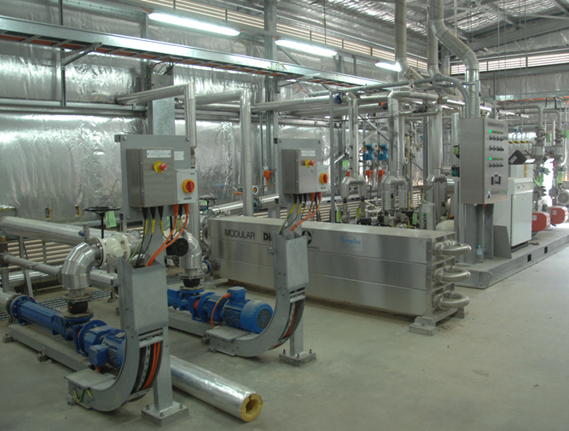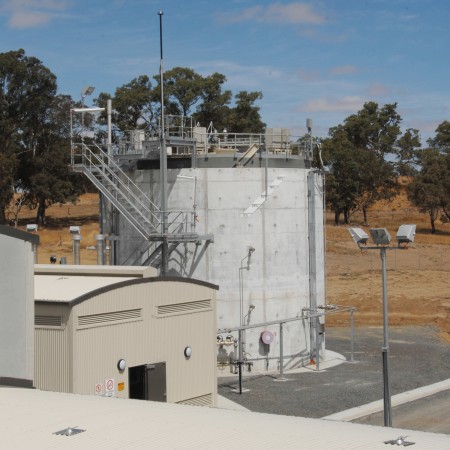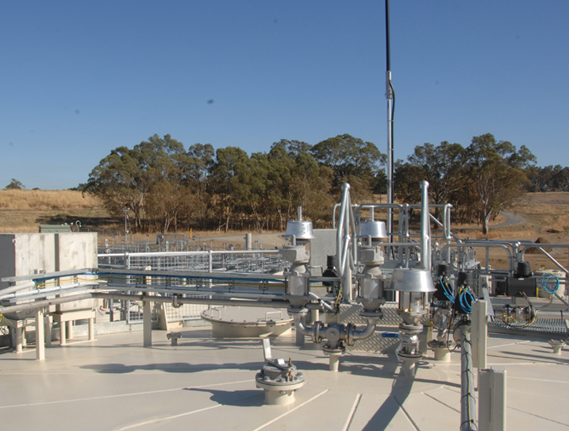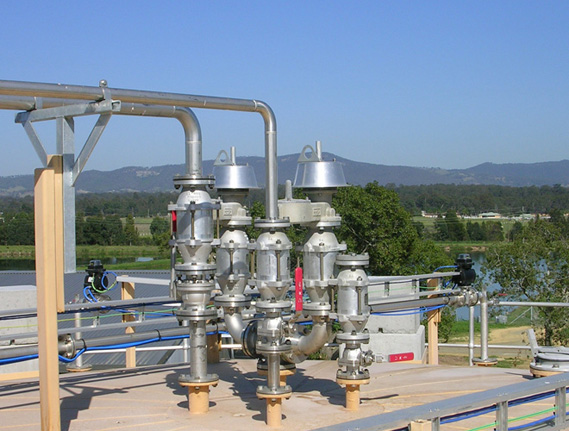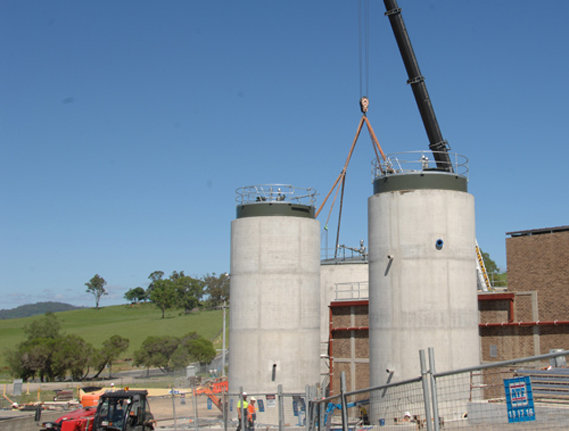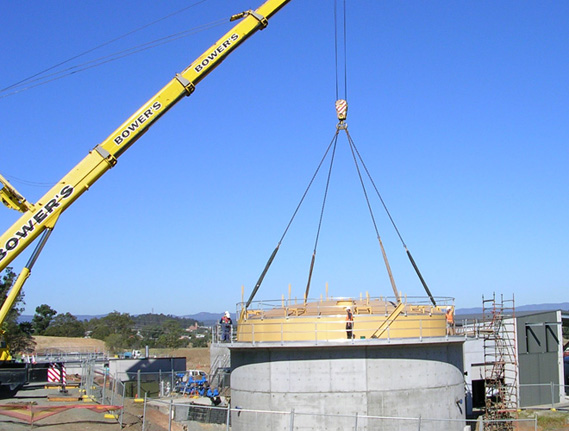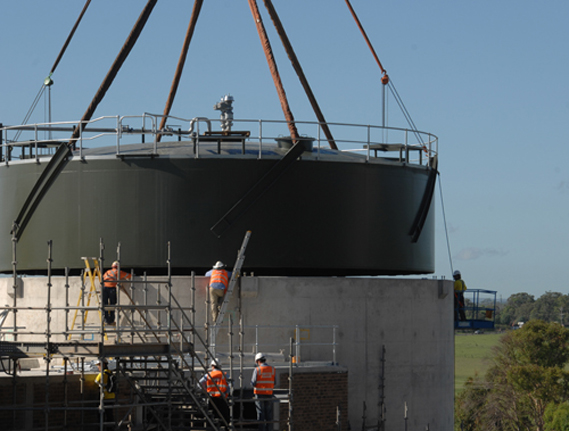Digestion
Digester Roofs
Digestion tanks are normally covered with concrete or steel roof structures of differing shape and structural design. Concrete roofs are more commonly cone shaped, whereas steel covers are
normally domed. Steel covers can be fixed or floating.
Floating covers in primary digestion tanks have a number of advantages. The more uniform gas pressure produced provides a high degree of operating safety and the maintained relationship
between liquid level and mixing devices fitted on floating covers results in greater operating consistency.
Sludge Mixing
Sludge mixing in the primary digestion tank is carried out to mix the incoming raw sewage solids from the primary clarifier with the digesting sludge and to maintain homogenous conditions throughout the tank contents in order to optimise bacterial activity. Mixing also disperses any scum that may form on the surface of the digester liquor.
Mixing in the digester tank can be carried out by mechanical mixing or gas diffusion type mixing systems. Selection of the mixing system is dependent on the size and type of treatment system and the means of subsequent sludge disposal. Mechanical mixing should only be used in well screened sewage.
Sludge Heating
Heating of primary digesters maintains the optimal sludge temperature at which thermophyllic digestion takes place (32OC – 38OC). The heat exchanger can be located inside or outside the digestion tank.
Internal heating systems are normally combined with the sludge
mixing function of the plant such as internal or external draft tubes. Modern practice uses an external heat exchanger because of increased heat efficiency, less maintenance and also because the designer has a greater range of sludge mixing systems from which to choose.
Waste Gas Burning
Surplus gas produced in the sludge digester beyond that required for heating and power generation is burned to reduce plant green house gas emissions.
The unique burning system of our Groth range of gas flares contain flame retention vortex vanes and when coupled with the downdraft preventer in the shield the result is an updraft and an air mixing action that provides a highly efficient, smokeless and odourless burn and virtually
eliminates the possibility of the flame being blown out.
The wind shield is designed to control outside winds up to 200 MPH, and operate efficiently in heavy rains.

